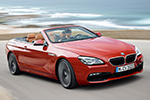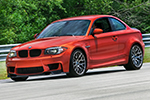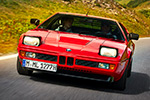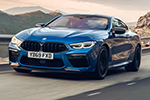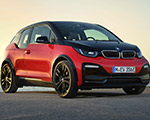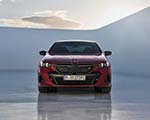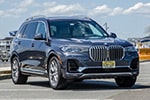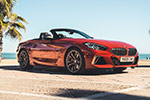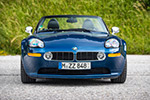Last week, I traveled to Miramas, France, to experience firsthand the electric future of BMW. Since the dramatic reveal of the BMW i Vision Dee in 2023, BMW has persistently teased us with glimpses of their “new” Neue Klasse family. Following several prototypes like the BMW Vision Neue Klasse and Vision X Neue Klasse, expectations had grown tremendously. Now, finally, it was time to see whether the Neue Klasse electric vehicles would truly live up to their hype.
The chosen testing venue added another layer of intrigue: BMW’s secretive, heavily guarded Miramas facility in southern France. Typically reserved for confidential testing, Miramas hosts rigorous testing programs for BMW Group’s entire future product lineup, including motorcycles. Gaining entry often feels similar to accessing a high-security military base, complete with pre-clearance protocols, exhaustive paperwork, and mandatory taping over of all phone cameras—and even the lenses on Ray-Ban Meta glasses.
Previewing the 2026 BMW iX3 50 xDrive: Design in Disguise
Once inside, a carefully structured day full of hands-on testing awaited me. The star attraction was the 2026 BMW iX3 50 xDrive (codename NA5), an important model among BMW’s ambitious lineup of next-generation electric vehicles. While heavily camouflaged and covered with plastic panels to conceal its exact design and fine details, even these early prototypes unmistakably showed BMW’s new design language. The front-end is feature a new kidney grille made of LED lights, along with new headlights and taillights that look nothing like the BMWs today. The overall shape is exactly what we saw on the Concept Vision X with a more coupeish roofline that on the G45 X3 and shorter bonnet than usual since there is no engine at the front.
A Radical New Interior: iDrive X, Panoramic Display, and Digital Minimalism
The interior cabin varied across vehicles, reflecting different stages of development and underscoring that final production trims and materials were still in flux. But stepping into the iX3’s cabin immediately revealed significant changes and tech innovations. Prominently placed in the center of the dashboard was a redesigned 17.9-inch infotainment display, perfectly positioned for better ergonomics when reaching the screen.
Complementing this was the new Panoramic Display spanning the entire dashboard, paired with a redesigned high-fidelity Head-Up Display. I tested two distinct steering wheel designs also: one with spokes at traditional 3 and 9 o’clock positions (with smaller additional spokes at 5 and 7), and another with unconventional 6 and 12 o’clock spokes—a layout previously avoided due to concerns about instrument visibility.
Traditional controls like the familiar iDrive controller and gear shifter are gone, replaced by minimalist interfaces echoing recent BMW interior design philosophy. If you think we don’t have a lot of buttons today, then you’re in for a surprise with Neue Klasse; even climate and ventilation settings had migrated completely into the new digital iDrive X interface. Door panel controls remained familiar, while seat adjustment functions resembled those in the BMW iX. A large panoramic glass roof stretching from front to back enhances the cabin’s openness, although it appeared to be non-opening.
Overall, BMW had adopted a refreshingly minimalist and futuristic design language which remains to be seen how it will be viewed by customers and fans of the brand.
Driving Into the Future: The Silent Start and Simplified Driving Modes
A surprising omission was the conventional Start/Stop button, replaced by a somewhat intuitive sequence: close the door, fasten the seatbelt, press the brake pedal, and the vehicle silently awakens. Simplified into two core options, Comfort and Dynamic, the driving modes offered extensive customization, including adjustable steering feedback, drivetrain responsiveness, brake regeneration power, and even seat backrest firmness and side bolster support.
The agenda was comprehensive and challenging, designed to thoroughly evaluate the driving dynamics of the BMW iX3 (NA5). I tackled everything from high-speed circuit testing to scenic yet demanding drives on winding mountain roads around Miramas, an area renowned for picturesque landscapes dotted with vineyards and rustic villages.
BMW had additional plans for me beyond driving dynamics evaluations: showcasing new advancements in their Advanced Driver Assistance Systems (ADAS)—still Level 2+ but enhanced—and hosting a technical workshop on their 800V charging infrastructure. To round out my experience, I received a first look at BMW’s new iDrive X infotainment system, featuring the expansive Panoramic Display.
More Than 400 Horsepower
Turning to the specifications—still preliminary and possibly subject to minor adjustments—the 2026 BMW iX3 50 xDrive delivers over 300 kW (approximately 402 horsepower) and more than 600 Nm of torque distributed seamlessly across both axles. The weight distribution is 49-50 front/rear.
BMW distinguishes itself from some competitors that rely exclusively on permanent magnet synchronous motors (PSMs), which depend heavily on rare-earth materials. Instead, the Neue Klasse models employs a hybrid configuration: externally excited synchronous motors (EESMs) at the rear axle paired strategically with asynchronous motors (ASMs) upfront, significantly reducing their reliance on rare-earth elements.
Meet the “Heart of Joy”: BMW’s Game-Changing Vehicle Supercomputer
At the heart of this pioneering technology is BMW’s intriguingly named “Heart of Joy.” This advanced, in-house-engineered superchip is designed not only to dramatically transform the driving dynamics of BMW’s future electric fleet but also to uphold the cherished BMW ethos of being the “Ultimate Driving Machine,” encapsulated in their legendary slogan, “Freude am Fahren” (Sheer Driving Pleasure). As a fun fact, this slogan debuted in 1964, alongside the original Neue Klasse models that fundamentally reshaped the company’s destiny.
Handling Course At High Speeds
My testing began on a familiar yet challenging handling course featuring diverse road surfaces—including wet tracks to simulate slippery conditions. Initially unfamiliar with the car’s precise behavior, the first laps around the handling course began cautiously. Almost immediately, however, I noticed a significant difference compared to previous BMW electric car experiences. The Heart of Joy delivered an impressively refined driving experience—seamlessly smooth from standstill to acceleration, without the jolts or roughness commonly associated with electric drivetrains. It was a sensation difficult to properly describe in words: the supercomputer’s ability to process vast amounts of sensory data ten times faster than previous systems translated directly into spectacularly smooth handling and sophisticated energy recuperation.
Put simply, the Heart of Joy integrates traditionally separate vehicle dynamics systems into one powerful central computing unit, coordinating acceleration, braking, steering, and energy regeneration seamlessly. Algorithms finely control each function, reducing reaction times and latency while substantially enhancing energy efficiency and driving precision. BMW’s proprietary Dynamic Performance Control software orchestrates this technological harmony.
Regenerative Braking Refined: Effortless Stops and Electric Efficiency
During hard braking into corners, regenerative braking force is distributed across both axles. What you learn quickly is that even aggressive throttle inputs on corner exit delivers exceptional traction. Even during abrupt evasive maneuvers, the intelligent system continuously balanced power and braking among individual wheels, ensuring impeccable vehicle stability and confidence-inspiring control.
This refined synergy resulted in a remarkably natural and intuitive driving experience, one BMW aptly describes—and I genuinely felt—as “effortless.” The iX3 handled elegantly, feeling lighter, more agile, and markedly more composed than any previous electric BMW tested. After only brief familiarization, cornering speeds comfortably exceeded 130 km/h, the iX3 consistently demonstrating astonishing grip, exceptional wheel control, and smooth, progressive acceleration—free from the abruptness often characteristic of performance-focused EVs.
Braking dynamics equally impressed: approximately 90 percent of braking relied on electric motor regeneration, seamlessly complemented by hydraulic brakes when necessary. BMW emphasized that regenerative braking could boost overall efficiency by up to 25 percent.
The brakes themselves offered an entirely new experience in EV braking refinement. Whether at high speeds, low speeds, or steep inclines, the braking system delivered smooth deceleration that was so impeccably balanced I occasionally tested it with eyes closed to figure out if the car truly stopped. The transitions were that smooth. Such refinement significantly enhances comfort and driving enjoyment, especially in urban stop-and-go scenarios.
Additionally, at varying speeds, including down steep gradients and through cornering scenarios, the iX3’s ability to decelerate without breaking a sweat was a standout. In urban conditions or stop-and-go traffic, this level of refinement could significantly reduce passenger fatigue and discomfort. Even when testing the car’s behavior on 12% and 20% gradients, both uphill and downhill, the braking remained equally smooth. This is especially valuable for long commutes or family journeys, where repeated starts and stops are part of the routine.
Grip, Balance, and Seamless Control
The overall driving dynamics went beyond my already-high expectations. Over the past year, BMW has thrown plenty of marketing buzzwords at me—promises of emotional connection, dynamic agility, seamless integration—but I’ll admit, I took most of them with a grain of salt.
I was wrong.
The new 2026 BMW iX3 (NA5) delivered on nearly every claim. Body roll was nearly nonexistent. Cornering grip made the car feel more like a well-sorted rear-wheel-drive sport sedan than an electric crossover. Exiting corners was drama-free, quick, and utterly confidence-inspiring. There was no understeer to speak of—just a car that intuitively followed the direction of the steering with athletic precision.
A Brand-New Steering Application
Speaking of steering, it’s a major leap forward for BMW’s electric portfolio. Although the platform shares some geometry with the G45 X3, the engineering philosophy behind it is entirely different. BMW’s engineers focused on providing more natural feedback from the road while carefully avoiding the artificial feel that can come with amped-up electric assist. In Dynamic mode, the steering felt particularly sharp and communicative. I could feel subtle road textures and the bite of the front tires. This EPS setup—essentially an electric power steering on steroids—delivers precision without numbing the driver’s senses.
Comfort mode tells a different story. Here, the steering relaxes noticeably, ideal for city driving and relaxed highway cruising. I found myself navigating with ease using just one hand, even at higher speeds. It’s a dual personality that works. The iX3 adapts to your mood with an agility that’s rare in EVs.
I’ll leave the deeper engineering discussion for our YouTube video, where I sat down with the BMW engineer responsible for the steering tuning. But suffice it to say: this is some of the best steering feel I’ve encountered in an electric vehicle.
The Base Steel Suspension Impresses
Next up, the suspension. The prototype I drove was fitted with the base steel spring suspension—adaptive damping will also be available—but it was anything but basic. After a few laps, I found myself praising the setup to the engineer riding shotgun. With a grin, he admitted that, yes, this might just be the best steel-spring suspension they’ve ever engineered for an EV. That’s a bold claim, but one that felt justified.
The ride was firm but never harsh. Unlike some setups that bounce excessively over uneven roads, the iX3’s dampers rebounded quickly and settled almost immediately. I drove it over every type of surface BMW had in their diverse Miramas testing ground—wet tarmac, potholes, patched asphalt, elevations—and it always remained composed. There was no floating, no secondary oscillation, just a clean, crisp response. Compared to steel setups in other EVs—and even some adaptive systems—the iX3 struck a sweet spot.
This becomes especially relevant for everyday use. As a daily driver, the iX3 50 xDrive with steel springs would be a fantastic option. It offers just enough compliance for comfort while providing the rigidity necessary for fun. And when equipped with adaptive damping, it’s likely to elevate the experience even further.
The prototypes came with different tire setups. One was equipped with 255/40 R21 Goodyear Eagle tires—high-performance rubber with a bit more road noise but added grip. Understandably, these would slightly affect range, but they definitely sharpen the driving experience.
Wet Track, No Drama: How the iX3 Mastered Low-Traction Conditions
My next test was perhaps the most thrilling—a water-drenched handling track with a long U-shaped corner. Designed to explore grip and stability in low-traction conditions, this course served as a playground for what the iX3 could really do. I started cautiously, modulating throttle and steering inputs, expecting the rear end to eventually let go. But Roman, the BMW engineer in the passenger seat, had other plans. “Trust the car,” he said. So I did.
With the car in Dynamic mode and the accelerator pinned, I dialed in a sharp steering angle. The result? Nothing broke loose. So I pushed harder on the next lap—more steering angle, more throttle, less margin for error. Still, the BMW iX3 refused to lose its composure. Grip was constant. Stability control intervention was subtle without deducting from the driving experience. At 130 km/h, in soaking wet conditions, the iX3 remained planted.
On the third and final lap, Roman told me to go for it—full commitment. I threw everything at it. At this point, in most cars, I’d be fully sideways or spinning out. The iX3? Just a bit of gentle wheelspin, so controlled I could keep one hand on the wheel. It was almost theatrical in its confidence. The PDC (Performance Dynamics Control) system deserves serious credit here. It worked in the background, never stealing the spotlight, always letting me feel in control.
As I rolled off the course, Roman glanced over and smiled. He knew what I was thinking. Job done.
Next up: real roads, and a new test car.
Everyday Comfort Meets Enthusiast Agility on Real Roads
I swapped into another BMW iX3 50 xDrive prototype, this one wearing all-season tires. The drive route took us through several quiet French villages, chosen deliberately for their aggressive speed bumps and imperfect pavement. My new co-driver, an engineer named Stefan, encouraged me to test the suspension again. “Try 50 km/h over the next one,” he said with a grin.
Normally, that would send a car’s suspension crashing and rebounding violently. But not in the iX3. The vehicle soaked it up with just a single bounce and settled immediately. Still skeptical, I tried again—same result. I was starting to believe the hype. And just to confirm it wasn’t all smoke and mirrors, a small European hatchback went over the same bump in front of us. Its rear axle bounced two, three times before settling. I could only imagine what that felt like from inside.
I toggled between Comfort and Dynamic modes. Both handled the bumps confidently, with Dynamic providing a firmer but still comfortable ride. For everyday use, the tuning felt ideal—compliant enough for city life, but sporty enough for enthusiastic driving.
Then the terrain changed. Narrow, hilly backroads encouraged more spirited driving. I switched into Dynamic, dialed in the most aggressive brake regen (B mode), and took off. The iX3 responded with confidence, flying through corners with sharp steering inputs and never once breaking traction. The linear power delivery was addictive. What stood out most was how well the car managed braking: unless you were actively looking for it, you couldn’t tell when hydraulic brakes kicked in to support regen.
A sharp left-hander came next—uphill, fast, blind. “Do your best,” Stefan said. So I did. Floored it. By the time I hit the apex, we were doing 100 km/h. No understeer. No tire squeal. Just precise control, like carving a line with a scalpel.
What you didn’t hear was just as important. There were no weird brake sounds—no grinding, no low-pitched whining like in other BMW EVs. In the current iX, for example, soft stops can emit an odd tone, particularly in D mode. But in this prototype, silence was the norm. The transition between regen and friction braking was seamless.
Panoramic Display, HUD, and iDrive X Interface
With the high-speed testing behind us, it was time to focus on something equally important in a modern BMW: the tech. I had initial reservations about iDrive X and the new Panoramic Display—how intuitive could an entirely reimagined system really be? But within minutes, I was navigating it like a familiar smartphone. It felt natural. The information was projected just above the dashboard, perfectly within the driver’s field of view. It never felt intrusive, nor did it require a glance far from the road. The layout was elegant. Crucial data—like speed and navigation—occupied the left portion, with customizable widgets to the right
One standout feature is Silent Mode. When activated, it clears the central and right-hand portions of the display, leaving only legally mandated information. It’s a minimalist approach that enhances focus. If you prefer a more data-rich setup, additional widgets can be added, including a highly legible navigation overlay that worked seamlessly in tandem with the main central screen.
At one point, I found myself wondering if I even needed the Head-Up Display anymore. But that’s no knock on the HUD itself—it’s better than ever. Positioned just above the Panoramic Display, it offers sharp, high-fidelity graphics with a clean UI. One highlight is a path graphic that shows road curvature and alerts for sharp bends—a feature BMW says is partly why they’ve chosen not to include the Augmented Reality View currently found in iDrive 8.5 and 9.
iDrive X, while still technically in pre-production, already felt polished. It’s more responsive than any of the current iDrive systems. Navigating the screen is easier thanks to more horizontal scrolling and fewer menu layers. Its larger screen size means more information is visible at a glance, requiring fewer interactions and keeping your attention where it belongs—on the road. Some menus, like settings, adopt a vertical format reminiscent of Tesla’s interface. With no iDrive controller, interaction happens via the screen—and thankfully, it’s intuitive. Is it better than using buttons and switches? Of course not, but at least, it’s a huge step forward in touch interactions.
BMW has also streamlined apps by consolidating functions. For instance, the new My Vehicle app now houses what used to be scattered across two or three menus. I won’t dive into every feature here, but I captured a detailed walkthrough in our exclusive video demo.
Haptic Smart Buttons and Thoughtful Ergonomics
Even the steering wheel reflects BMW’s forward-looking approach. New haptic buttons illuminate contextually, responding only when relevant. I was skeptical at CES, but after extensive use, they seem to work well. They’re responsive, easy to use, and far less prone to accidental presses. There’s also a small capacitive pad that allows you to scroll through playlists or station lists with a swipe of your finger, though its functionality is currently limited to these type of interactions.
The steering wheel itself is thoughtfully designed—less bulky than today’s M Sport wheels, with a flatter top and bottom and an overall oval shape that makes it easier to grip and maneuver. One oddity: the BMW logo was taped over, and with the 6 and 12 o’clock spoke layout, I occasionally found myself wondering whether the wheel was perfectly centered. Still, its shape and ergonomics worked well in spirited driving and relaxed cruising alike.
Seats, Interior Space and Frunk
Seats in my prototypes didn’t appear to be the sport ones, but they offered ample lateral support and comfort. Even during aggressive cornering, I stayed securely planted. As someone who often experiences back pain with seats that are too soft or too firm, I was surprised to find these hit the sweet spot—supportive without being punishing.
The center console was wide enough for both me and the co-driver to rest my elbows without fighting for space. A vertical wireless charging pad—now split into left and right sides—appeared to charge devices evenly on both. BMW hasn’t released full dimensions for the iX3 yet, but it seemed slightly longer than the current G45 X3. Interior space felt generous. Rear passengers benefit from a flat floor, eliminating the raised seating posture common in other EVs. At 1.9 meters tall, I had ample headroom and legroom front and rear.
I wasn’t able to open the trunk during my session, but BMW confirmed a frunk will be available—just don’t expect massive storage up front. It’s more for convenience than capacity.
The door handles also received an overhaul. In the closed position, they sit flush with the body. As you approach with the key fob, they extend outward. There’s even a small hidden button behind each handle that lets you manually close them without using the fob—another neat touch.
Game-Changing Charging: 800V Architecture and 400 kW Capability
Next, I turned my attention to charging—arguably the most crucial metric for any EV buyer. Thanks to the new 800V architecture, the 2026 BMW iX3 50 xDrive is capable of charging at slightly over 400 kW. During the charging test, the iX3 added roughly 350 km of range in just 10 minutes. BMW says the system can maintain that peak for three to five minutes before it begins to taper. A 10–80% state of charge can be achieved in about 20 minutes under ideal conditions.
For North America, the iX3 will come equipped with a NACS connector, granting immediate access to the Tesla Supercharger network and the upcoming IONNA network. From day one, BMW owners will be able to use thousands of high-speed chargers across the U.S., removing a major barrier to EV adoption.
The charging port has also been smartened up. The flap opens and closes automatically, though there’s a catch. The additional DC fast-charging port only closes on its own—it must be opened manually. That decision makes sense: the vehicle can’t predict if you’re plugging into a Level 2 charger or a DC fast-charger, so it defaults to manual for safety.
Interestingly, the flap can also open automatically in two scenarios: first, when navigation to a charging station is entered, the flap opens as you arrive and exit the car. Second, if you haven’t entered a destination but approach with the charging cable in hand, the ultra-wideband signal from your key tells the car to open the flap. Cleverly, it can distinguish whether you’re simply heading to the trunk or actually intending to plug in.
Level 2+ But Improved
BMW isn’t giving the the iX3 a new label for its ADAS. Instead, they are still going to offer the Level 2+ capabilities from the past, but improved in significant areas. In Europe, the upcoming BMW Neue Klasse platform will debut with enhanced automated driving capabilities that meet the DCAS (Driver Control Assistance System) regulations under UNECE R171. This advanced system will allow the vehicle to handle both steering and acceleration on highways under continuous driver supervision, using a fusion of sensors, high-definition maps, and real-time AI processing via BMW’s “Heart of Joy” central computer.
Some of the things you’re not allowed anymore to do is advertise through words that you can take your hands off the steering wheel, for example.
Another cool feature coming, at least to European-spec iX3s, is the ability to retain the Level 2+ capabilities when only lightly taping the brake pedal. Today, as soon as you tap that brake pedal, the ADAS is turned off.
Now comes my favorite feature: changing lanes without using the blinkers. The BMW iX3 uses the Active Lane Change with Eye Activation tech, but tuned up. So after you get the alert that you can safely change lanes, you look into the side mirror, and instead of using the turn signal stalk, lightly steer the car to left or right, and the blinkers will come on and the iX3 will change the lane for you.
There are a lot more features to talk about, like pedestrian detection, obstacle avoidance and more, but we will have a full video on this on our Youtube channel, so go check it out!
Final Verdict: The 2026 BMW iX3 Redefines the Electric Crossover
After a full day behind the wheel of the NA5 iX3 prototype, I can confidently say this: BMW isn’t just evolving—they’re reimagining what a premium electric crossover should be. This is not just another electric SUV—it’s the reboot of the original Neue Klasse, a modern answer to the cars that saved BMW in the 1960s. It’s innovative, smart, and deeply satisfying to drive.
I came to Miramas cautiously optimistic. I left genuinely impressed. The 2026 BMW iX3 combines brilliant chassis tuning, remarkable range and charging capabilities, and futuristic tech into a package that feels complete. And let’s not forget the Heart of Joy—the superbrain that ties it all together.
I’ve been critical of BMW when warranted. But this time? Chapeaux.



























































































